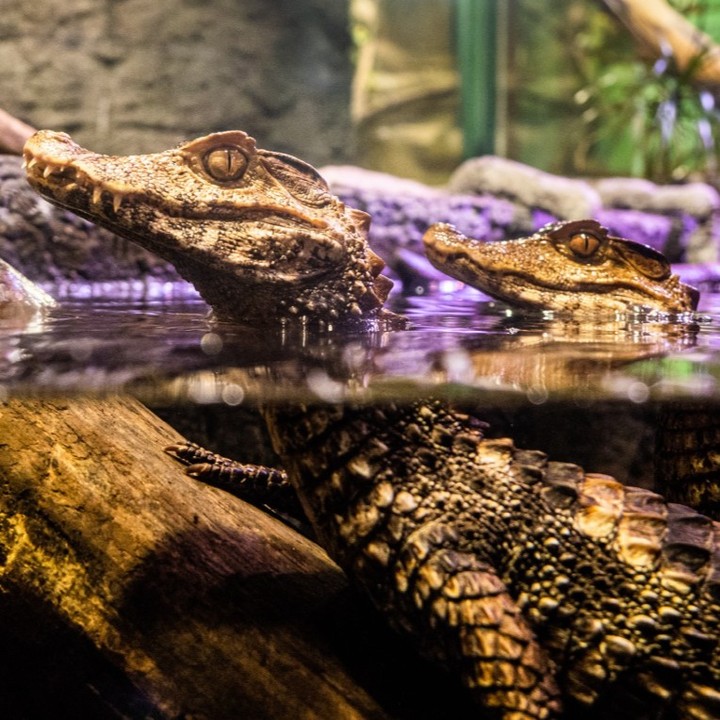- Introduction to Cuvier’s dwarf caimans and their unique place in the crocodilian family.
- Physical characteristics and adaptations, including size and structural features.
- Habitat preferences, natural range, and ecological role in tropical ecosystems.
- Behavior and diet, focusing on feeding habits and social interactions.
- Conservation status, threats, and the importance of wildlife conservation efforts.
Cuvier’s dwarf caimans are fascinating creatures, distinguished as the smallest members of the crocodilian family. These reptiles have captured the curiosity of zoologists and wildlife enthusiasts due to their distinct characteristics and ecological significance. Found primarily in the riverine habitats of the Amazon Basin and other areas of South America, the Cuvier’s dwarf caiman is an important part of tropical ecosystems both as a predator and prey within the food web.
Males of this species can reach a length of up to 6 feet and 5 inches, while females generally grow to about 4 feet and 5 inches. This size difference is a common characteristic within the crocodilian group, reflecting sexual dimorphism, a phenomenon where the two sexes of a species exhibit different sizes, among other traits. Despite their relatively small size compared to other crocodilian species, Cuvier’s dwarf caimans are well-equipped with a variety of adaptations that enable them to thrive in their diverse habitats.
One of the most noticeable features of the Cuvier’s dwarf caiman is its bony armor, known as osteoderms, which covers its upper and lower body. This protective layer provides defense against predators and aids in thermoregulation, helping the caiman maintain its body temperature amid varying environmental conditions. Additionally, their eyes and nostrils are positioned on top of their heads, allowing them to breathe and observe their surroundings while remaining mostly submerged in water.
The Cuvier’s dwarf caiman prefers freshwater habitats such as slow-moving rivers, streams, and flooded forests. These environments provide them with ample opportunities to feed on a diverse array of prey, including fish, amphibians, small mammals, and invertebrates. Their diet can vary based on the availability of prey in their specific location, reflecting their adaptable nature. One interesting aspect of their feeding behavior is their ability to process hard-shelled prey, such as crustaceans, thanks to their robust jaw structure.
Socially, Cuvier’s dwarf caimans are noted for their relatively solitary lifestyle, although interactions do occur, particularly during the breeding season. Mating takes place during the rainy season when water levels are high, facilitating movement and access to mates. Females demonstrate maternal care by guarding nests and sometimes assisting hatchlings to reach water, a behavior somewhat uncommon among reptiles.
Conservation efforts for Cuvier’s dwarf caimans are critical due to the multitude of threats they face in their natural habitats. Habitat destruction through deforestation, illegal poaching, and pollution pose significant risks to their populations. Conservation programs aim to protect their habitats and increase awareness about the role these creatures play in maintaining the ecological balance within their environments.
Wildlife conservation organizations, in collaboration with local communities and governments, strive to establish and manage protected areas that ensure the survival of this species. Educational initiatives are also crucial, fostering a deeper understanding of the importance of biodiversity and the need to preserve such unique species for future generations.
Efforts in captive breeding and research have been instrumental in developing conservation strategies. Captive breeding programs not only serve as a hedge against extinction but also provide valuable data on the biology and behavior of Cuvier’s dwarf caimans. Such efforts can potentially lead to successful reintroduction into protected wild areas, bolstering natural populations.
The Cuvier’s dwarf caiman serves as a remarkable example of the diversity and adaptability found within the crocodilian family. By studying their characteristics and behaviors, scientists can gain insight into the evolutionary success of crocodilians over millions of years. Moreover, engaging the public in conservation efforts highlights the importance of sustaining biodiversity, which is vital for healthy and functioning ecosystems worldwide.
This species, with its unique place among crocodilians, merits continued research and attention to secure its future. Maintaining the delicate balance within tropical ecosystems where they reside not only benefits the dwarf caimans themselves but also ensures the overall health and sustainability of these complex biological communities. By prioritizing conservation and responsible environmental stewardship, we can help protect these remarkable creatures and the diverse habitats they inhabit.
*****
Source Description
Did you know? Cuvier’s dwarf caimans are the smallest member of the crocodilian family. Males can grow up to 6 feet and 5 inches in length, and females can grow up to 4 feet and 5 inches.


